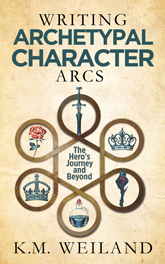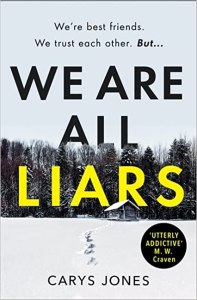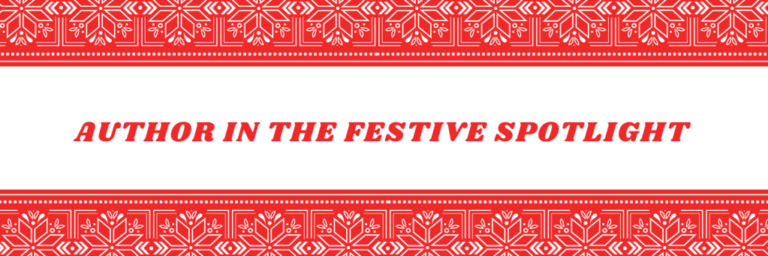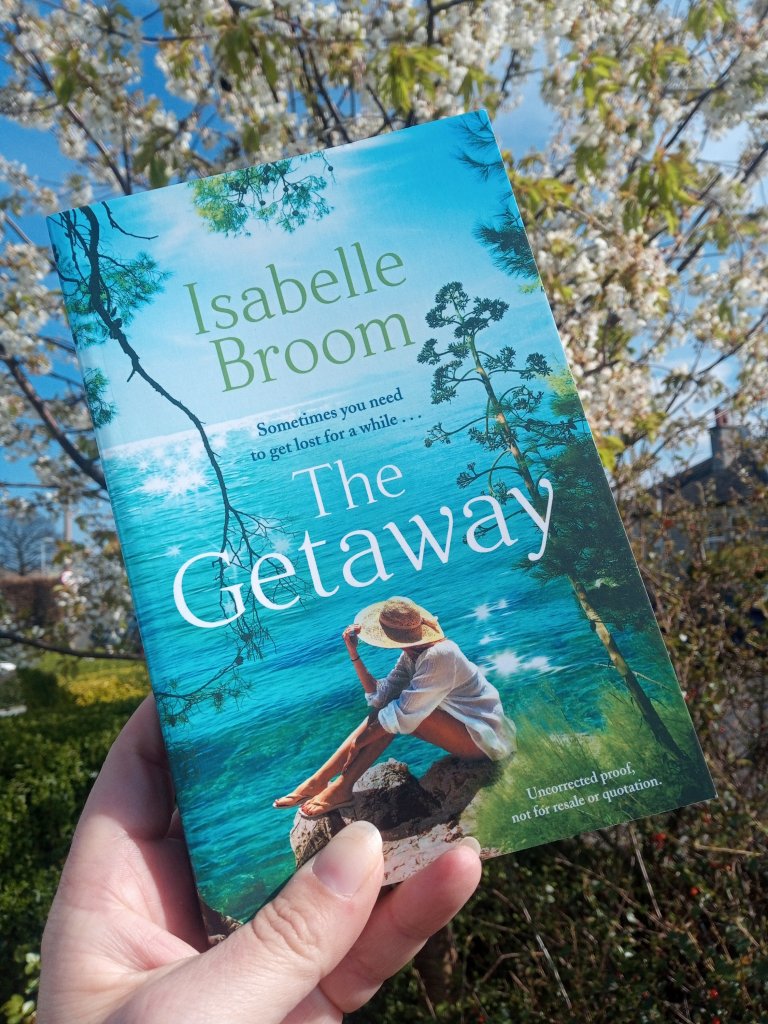 Welcome to this week’s post, which is a continuation of what we talked about in last month’s video when we started a checklist of important elements to consider for your story’s beginning. Last time, we specifically talked about what you need to consider in regards to character and all of the many elements you can use both to enhance character in the beginning and to use character to create an awesome beginning that hooks readers.
Welcome to this week’s post, which is a continuation of what we talked about in last month’s video when we started a checklist of important elements to consider for your story’s beginning. Last time, we specifically talked about what you need to consider in regards to character and all of the many elements you can use both to enhance character in the beginning and to use character to create an awesome beginning that hooks readers.
I talked in that video about how complex a topic beginnings are and how the first chapter has so many moving pieces and so many things to think about, not just in hooking readers and convincing them this is an entertaining story, but also in laying the groundwork for everything to follow. If your beginning can’t do all that, then it compromises the story that follows.
So I wanted to divide this topic into two posts (and you can also watch the video or listen to the podcast, if you prefer those mediums). Really, there’s so much to talk about and we’re not covering all of everything that there is to consider about beginnings.
>>Click here to read “Your Ultimate First Chapter Checklist, Pt. 1: Hooking Readers“
>>Click here to read “Your Ultimate First Chapter Checklist, Pt. 2: Writing the Opening Scene“
>>Click here to read “Your Ultimate First Chapter Checklist, Pt. 3: Introducing the Story“
Today, we are going to be talking about plot considerations for your story’s beginning.

Creating Character Arcs (Amazon affiliate link)
Obviously, character is a huge part of this. You can’t have plot without character. Beginning with some of the things we talked about in the last video as a foundation is important in creating or highlighting elements of your character’s personality that drive the conflict and show your character’s relationship to the thematic Lie and Truth, which are going to drive their character arc and influence what they want and how they interact in the plot.
Setting Up Your Character’s Plot Goal in Your Story’s Beginning
One of the first things to remember in introducing the plot in your story’s beginning is that every scene in your story is like a domino in a row of dominoes. You know how people create those really elaborate designs, where if you push one domino over, it creates this chain reaction? Every domino has to be perfectly in place for this to happen, or the action comes to a halt and, at best, the person has to come in and manually bump over the next domino to recreate the chain reaction.
The first domino in your plotline of dominoes is the first scene. Ask, “How does this set up the chain reaction that’s going to follow?” It can’t be this arbitrary scene that’s tacked on in order to accomplish other important things that have to happen in the beginning (such as introducing characters or even just hooking readers). It has to do so in a way that is integral to the entire story and that creates this sense of cohesion and resonance.
Setting Up Your Character’s Desire and Plot Goal
What is plot in a nutshell? We can simply think of it as the character wanting something. They have a goal, and that goal is met with obstacles, which is what creates the conflict and therefore the entire drama of the story. It all begins with something your character wants.
This desire is something specific. It’s the plot goal, whatever that may be in your story, whether it’s a relationship (i.e., they want to be with somebody), whether it’s an actual item they’re pursuing that they need, or whether it’s to defeat an enemy. The plot goal can be something very specific (i.e., something they can hold it in their hand), or it can be something more abstract. Whatever it is, it is something specific within the plot. That specific goal is driven by a deeper desire on your character’s part. This is the Thing Your Character Wants.

Structuring Your Novel (Amazon affiliate link)
Setting Up the Thing Your Character Wants
This is important to consider when setting up your first chapter, because the plot goal will continue to gel as the story goes along. Particularly throughout the First Act, the goal may not be something the character specifically is after or even knows about necessarily. It may not fully come into view until the beginning of the Second Act, but you still have this whole first part of your story that you have to fill with stuff that has to happen. These events need to engage readers and make them want to read on until they get to that full immersion in the story’s drama.
So what do you do? What drives the plot in this early part of the story? Again, the answer is the Thing Your Character Wants. This is a deeper desire. It’s a deeper Want that fuels the desire and the need for that plot goal. As the story progresses, this desire will funnel into something that’s more specific. But this initial Want is founded upon and driven by the character’s relationship to the thematic Lie the Character Believes.
The Lie is a limited perspective the character holds—a limiting belief about themselves or the world they live in—that is motivating their actions in a way that is ultimately dysfunctional. It becomes increasingly so within the events of your specific story. Think about in this first scene as you’re crafting. What is the Thing Your Character Wants?
Even if you’re not yet able to craft an opening scene that is specifically involved with the plot goal that will come to light later on, you can still craft a scene based around the character’s desire, around the Thing Your Character Wants in this opening scene. In so doing, you get the opportunity to dramatize their relationship to the Lie and their relationship to the Normal World.
>>Click here to read “What Does Your Character Want? Desire vs. Plot Goal vs. Moral Intention vs. Need“
Setting Up the Thing Your Character Needs
You can also think about the Thing Your Character Needs, which contrasts the Want. Generally, the Thing the Character Needs is the thematic Truth, which the character will come to believe as the story goes on. The Truth is the more expanded mindset contrasts the limitations with which they start out. Obviously, they don’t have the Truth in the beginning of the story. They may never get the Truth, depending on what type of arc they’re following. In a Positive Change Arc, they won’t fully integrate the Truth until the end of the story.
Use your awareness of the Thing the Character Needs—and their lack of it—to show how they’re interacting with the Thing the Character Wants. How are they trying to pursue the Want as a replacement for the Need?
A basic example of this would be that the character needs to let somebody love them, but their want is to fill that need with other things. Maybe they want to be a pop star. They think they want fame when what they need is love. Maybe the story is about falling in love or maybe it’s about reuniting with an estranged parent or something like that, the events of which will help the character evolve their perspective of and their relationship to love and to themselves and to loving themselves ultimately. You’re setting up this plot in which they’re pursuing a mistaken mode of trying to get love via their pursuit of fame. They start out thinking, I’m going to become a famous pop star and everybody’s going to love me! That kind of thing. Set that up in the very first chapter, even as you’re waiting to fully bring in the dynamics that will challenge that mindset and make it difficult for the character to get what they need via what they think they want.
The Structural Job of Your Story’s Beginning
From a structural perspective, the main function of the beginning is to set up the story that is to follow. Its job is to introduce all of the important elements, whether that’s the characters, the settings, the stakes, the theme, the pieces of your character’s arc (i.e., the Lie the Character Believes, the thematic Truth, the Thing the Character Wants, the Thing the Character Needs). All of that has to be introduced within the First Act. Usually, you will at the very least start foreshadowing almost all of those things from the very first scene in the first chapter.
How can you bring in all these crazy disparate elements that have to start happening within a very confined space? Think about how this first chapter structurally relates to other important structural moments throughout the story.
Using the First Chapter to Set Up the First Plot Point
What happens in the beginning, whether it’s exactly the first chapter or a little later on, sets up and therefore foreshadows whatever happens at your story’s First Plot Point. The First Plot Point happens around the 25% mark. It’s the the doorway between the First Act and the Second Act. It’s a big moment. It is the moment when your character becomes fully engaged with the story’s main conflict against the antagonistic force in your story. Think about how you can set that up in the very first chapter, even if it’s subtle.
How is what’s happening in this opening scene creating a line of cause and effect within your plot that will lead your character to the First Plot Point? If you realize some of your ideas for this beginning chapter don’t seem to influence the First Plot Point, then it is possible you’re beginning too soon. The true beginning of your story is that moment where the character’s life begins to change. It’s not necessarily dramatic yet; it’s not overt. Very subtly, the circumstances are changing.
The character’s own inner experience is changing in a way that means they cannot remain the way they were anymore. This could be mainly the result of external circumstances. Maybe their neighborhood is going to be condemned, and they have to move, whether they want to or not.

Writing Archetypal Character Arcs (affiliate link)
Or the change could be the result of internal circumstances. This is what we see very often in archetypal character arcs, such as I talk about in my book Writing Archetypal Character Arcs. Wherever you’re at within the life cycle brings you to a point where you’re changing. Puberty is a great example. You don’t get a choice that you’re going on this next character arc into adulthood.
Maybe your character can’t help what’s happening, or maybe they’re excited for it. Maybe they think they know what they’re getting into and they want it. Either way, something is changing. It’s probably subtle. In the first chapter, it’s not at a point where they even recognize their life is going to change forever. But readers get to witness the first rumblings. Those first rumblings are where you want to begin your story. That is what then leads into and foreshadows the First Plot Point at the end of the First Act.
Using the Hook to Set Up the Resolution
One other thing you can think about structurally, is how the Hook in your story’s beginning mirrors and sets up the Resolution in your story’s ending.
The structural point and job of the first chapter is to act as a hook for readers. It’s to create that opening dynamic that not only kicks off the plot but pulls in readers. The Hook is that first beat in your story’s structure. By the time you get to the Resolution, whatever happens in the beginning, even if it seems very ancillary to the rest of the story, readers should be able to experience a harmony between the beginning and the ending.
For example, perhaps the character returns to wherever they were in the beginning of the story in that first scene. In some stories, this can be an extremely effective way to bring the story full circle and to show how the character and or the world has changed because of the effects of the story.
But the mirroring can be much subtler than that. Sometimes you might literally mirror whatever the Characteristic Moment was in the beginning with another Characteristic Moment in the very end, showing how the character has changed—or maybe they haven’t changed and that’s what you’re trying to emphasize.
Sometimes something you’ve created in the opening scene is something that you can mirror by the time you do get to the ending. Just keep that in mind when writing your story’s beginning. Realize that even if the beginning of the story seems very separate from what’s going to be the main conflict, you can create cohesion and bring the plot full circle by thinking about how any questions (whether overt or subtextual) that you’re raising in that first chapter can eventually be answered in the end.
Again, this can be very subtle. It is probably isn’t something you want readers thinking about throughout the whole story. But you can sow little seeds that can come to fruition at the end. This makes the whole story feel very grounded and resonant and purposeful. Even if you didn’t intend for the foreshadowing and the connections—even if it just magically happens that in the end you’re mirroring something in the beginning—it makes the story seem very intentional.
Techniques for Opening Your Story With a Bang
The last couple of things I want to talk about are techniques for opening your story. How can you take these elements we’ve talked about apply them to the actual story? How can you bring these techniques to life in a way that works for readers? It’s one thing for you to say, “This and this and this is going to happen.” It’s another thing to dramatize those events through words in a way readers will enjoy and relate.
Again, the Hook is your primary tool for pulling readers in with all of the great stuff you’re trying to share with them in the story. There are many ways to accomplish this. Bottom line: the Hook is a question. You’re not necessarily necessarily trying to get readers to ask an explicit question, but you do want to pique their curiosity and make them wonder what’s going to happen? with this dynamic.
You want them to ask, “What are the consequences of what just happened?” or “What would make someone do this?”
We’ve talked about backstory in previous video posts and how it can create a whole layer of subtext that makes readers wonder, “Why would someone do this? What’s the motivation?”
Think about how you can sew little hooks that get readers curious. If they’re curious, they keep reading. You can start with a little hook to pull them along until you can start planning bigger and bigger hooks as you continue to develop the main plot.
Opening Your Story In Medias Res
Now, one relatively popular way of trying to hook readers and beginning a story is starting in medias res. This is Latin for “in the middle of things.” Very often we see this in action stories where there’s already a battle going on. There’s already a car chase or a battle or whatever, and we are plunged right in the middle of it without knowing what’s going on. We don’t know why these characters are doing this or what’s at stake. It’s just action. The type of action will depend on the context of your story. Maybe it’s relational. For instance, maybe you open right smack in the middle of characters breaking up.
Regardless, the idea is that you’re cutting out the throat-clearing—the explanations of what’s happening—and just getting readers right into the good stuff. This can be very effective, but it’s also quite tricky. Particularly in written fiction, readers need a reason to invest in reading about action. Very often, descriptions of action are quite dense. Action isn’t the easiest thing for readers to immediately jump in and be interested in. Readers need a reason to care about the action. They need to know why your character is running through the streets. Very often, it’s better to hold the action back until at least later in the first chapter, if not later altogether.
Opening Your Story With Movement
However, the exception is in understanding what it means to open in the middle of the action. You may remember me mentioning in the last video how valuable it can be to open with your character in motion. You want them moving toward something. This doesn’t necessarily mean they’re running through the streets or shooting it out or some big action moment. It just means there’s a sense of movement. They’re moving toward something. There’s momentum. There’s a sense they want something—and therefore there’s a plot. There’s a goal, and there’s the opportunity for that goal to be obstructed, which is conflict.
If you can just impart that in your first chapter, that is often enough to allow your story to open in a way that cuts through the throat clearing, gets straight to the point of what the character is doing in this first chapter, without asking readers to invest in a really intense scene where they don’t yet know who they’re sympathizing with or they’re identified with.
Opening Your Story With Dialogue
Very often opening with dialogue is one of the best ways to begin in the action because dialogue actually is action. I like to say dialogue the purest form of showing rather than telling because, literally, you don’t have to describe it or explain it. It is straight from the horse’s mouth—straight from the character’s mouth. This isn’t to say you want your first line to be dialogue. And you probably do not want a dialogue conversation without the context of dialogue tags that point out who these characters are. But the back and forth of dialogue gives you the opportunity to get readers into the action of the story, while also sewing in bits of information about the characters who are speaking and whatever they’re doing as they go.
Dialogue won’t be appropriate for every story’s first chapter. Obviously, the situation that you’re trying to convey in your first chapter will have a lot to do with deciding whether dialogue is your best opening gambit. But, generally speaking, it is an effective technique for grabbing readers and creating that perfect balance between action and forward momentum, while also giving readers an opportunity to invest in the characters, to understand what’s going on, who’s talking, what they’re doing, what they want, etc.
***
Beginnings have so much ground to cover. There are so many things we could still talk about! Between last month’s video and this one, this a good overview of the basic elements and considerations for crafting a really solid beginning that sets the groundwork for the plot and the whole story to come, while also hooking readers and giving them a reason to be interested in the story.
Wordplayers, tell me your opinions! What were your primary plot considerations when beginning your story? Tell me in the comments!
Click the “Play” button to Listen to Audio Version (or subscribe to the Helping Writers Become Authors podcast in Apple Podcast, Amazon Music, or Spotify).
___
Love Helping Writers Become Authors? You can now become a patron. (Huge thanks to those of you who are already part of my Patreon family!)






